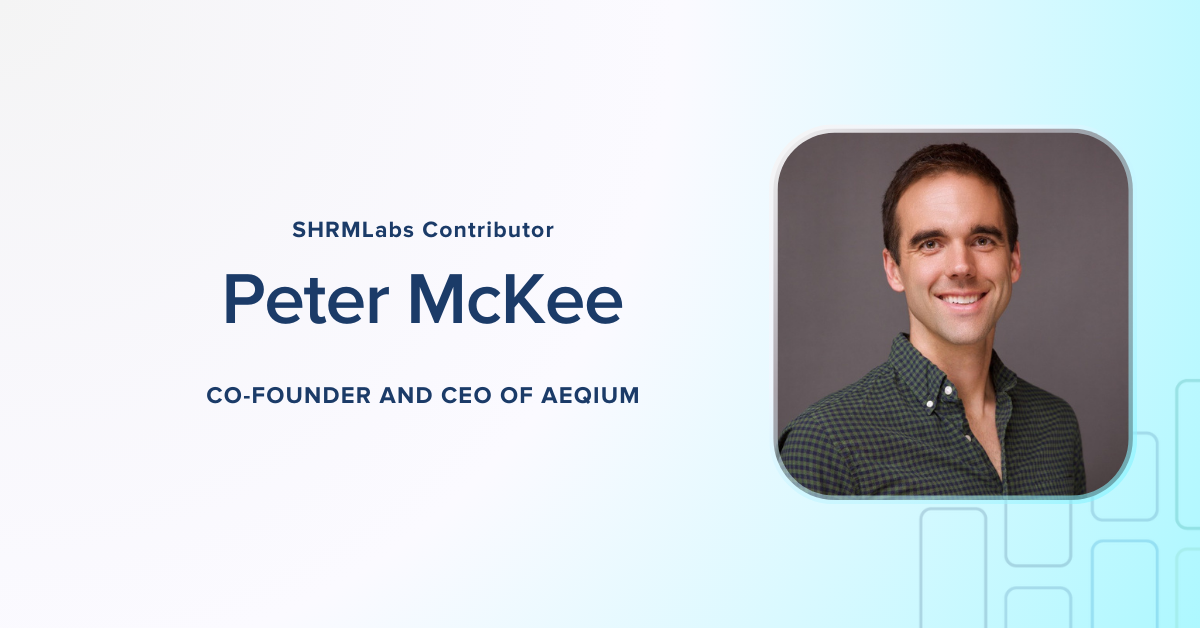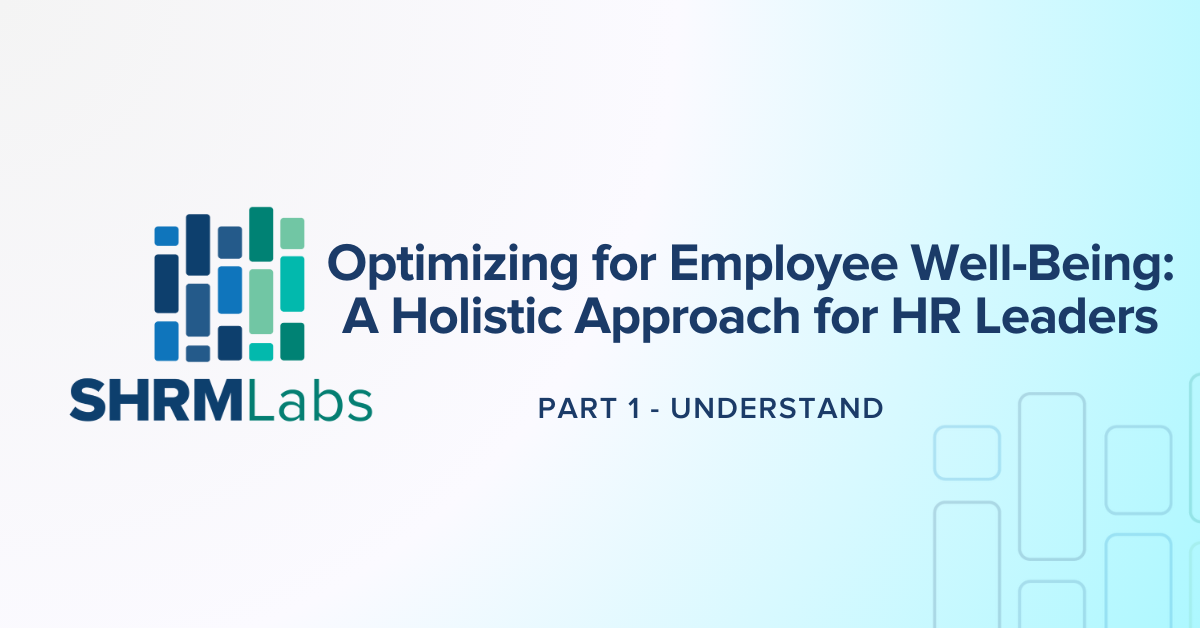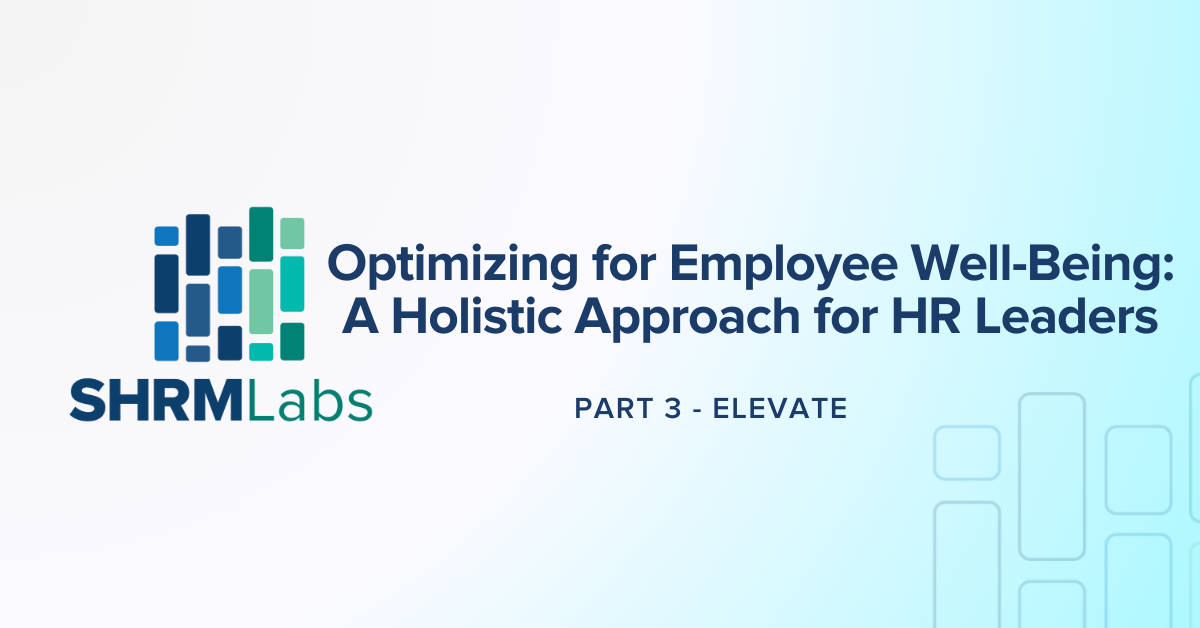Making Data-Driven Compensation Decisions
Maximizing the Value of All of the Compensation Data at Your Disposal
Before we begin…
Welcome to the WorkplaceTech Pulse, presented by SHRM Labs. We are expanding our resources to bring you the best possible information from leaders in HR technology and transformation.
My name is Nell Hellem, innovation catalyst at SHRM Labs. You will hear from me as well as my colleagues every other week with the release of each new edition. Let us know any topics you’d like to hear about related to workplace tech and we will consider them for future editions of the WorkplaceTech Pulse.
Introduction
Every organization has a wealth of internal data on employee compensation, but most struggle to leverage it to continuously improve their decision-making. There is huge potential in recognizing the value of the compensation data you already have, analyzing it, and providing insights to decision-makers when they’re most needed. This week, we’ll explore capturing and analyzing compensation-relevant data to make the best decisions possible.
I’m excited to introduce this edition’s contributor, Peter McKee, the co-founder and CEO of Aeqium. Peter, over to you!

Thanks, Nell! I’m Peter McKee, co-founder and CEO of Aeqium, a total compensation management platform. We help businesses make better compensation decisions faster by automating compensation planning workflows and providing managers and HR leaders with the total compensation insights they need to make the best decisions.
In addition to my role at Aeqium, I serve as a cyberoperations officer in the U.S. Army Reserve, focused on leading soldiers who defend the U.S. in cyberspace and ensuring they have access to the technology and data they need to be successful.
Prior to founding Aeqium, I spent my career in engineering and engineering management roles in both financial services and high-growth technology companies such as Uber and Braze. I had the opportunity to experience firsthand the challenges managers face in efficiently collaborating with their HR partners and in getting the data they need to effectively plan for compensation and the other aspects of people management.
I’m excited to explore with you a few of the ways that you can leverage data to make better compensation decisions in your organization.
Be sure to check out all of our editions of the WorkplaceTech Pulse!
Being Data-Driven Is More Than Finding a Market Data Source
The HR team and executives at just about any business you talk to will tell you that they want to be data-driven in their approach to compensation decisions. Data-driven decisions promote fairness, equity, competitive hiring, and the retention of existing employees. For many, however, data-driven compensation decisions don’t include much more than finding salary survey data and trying to benchmark candidates and employees in a consistent range relative to their peers.
While salary surveys and market benchmarks are an important piece of the puzzle, there is a great opportunity to level up compensation decision-making by tracking and analyzing the many other sources of data at your company’s disposal. Here, we’ll explore a few of those datasets and how you can best take advantage of them.
Leveraging Data from Your Talent Acquisition Team
Capturing data from your hiring process is particularly valuable because it is essentially market data that is pre-matched to the exact role you’re hiring for. The more you’ve vetted a candidate for a role, the more any compensation data you collect from them will be custom-tailored to your exact needs.
For emerging or unique roles, data from your hiring team may be your most reliable source. In those cases, matching your job with existing market benchmarks can be challenging or even impossible. You could also find that the talent market for your role is developing so quickly that salary surveys can’t keep up (for example, roles like generative artificial intelligenceI experts in 2023).
What to Track
Here are some of the types of data that your recruiters and hiring managers can help you track:
- Compensation numbers for your offers and whether they were accepted.
- Candidate compensation expectations.
- Competing offers that candidates share.
If you’re tracking this in a spreadsheet, it could look something like this:
![]()
Collecting this data allows you to build ranges and averages for each dataset. If you’re trying to calibrate whether your pay range is resonating in the market, compare the range for the job to the range where your offers are getting accepted and the range of candidate expectations. If you’re only succeeding at the top of your range, it could be an indicator that you’re off the mark.
Dealing with the Shift to Pay Transparency
Even if you’ve done this before or are currently doing some version of hiring data analysis, it may be time to re-evaluate how you’re collecting data from the hiring process in the age of pay transparency. If you’re hiring in one of the increasing number of jurisdictions that require posting the salary range with the job, you may not even be getting the signal that ranges aren’t quite right because candidates may self-select themselves out of the process before you ever meet them.
In a world of pay transparency, you need to move data collection earlier in the pipeline. Have a conversation with your sourcers and ask them to track when a candidate doesn’t move forward with the process because of the pay range and their salary expectations. If your applicant tracking system (ATS) shows you the number of views that a job posting gets, you should plan to track the conversion rate from view to application and pay attention to whether it is consistent with your other postings. These techniques are especially important when you’re calibrating a low-confidence pay range for a new role.
Leveraging Existing Employee Compensation Data
Data about what you’re paying your employees today represents a detailed record of all the compensation decisions you’ve made so far to successfully hire and retain your team. It’s also the most important dataset to pay attention to in order to maintain internal equity when making compensation decisions. Shouldn’t it have at least as much prominence in our decision-making process as external market data?
What to Track
For every role that you have more than a few employees in, you should track the minimum, maximum, and midpoint of employee compensation at that level. If you’re building this reporting manually, the simplest way to get it is typically to export a report of all employees from your payroll or human resources information system (HRIS) that contains their current salary and job level (if you’re not tracking job level in your HRIS, you’ll need to add a column for that after exporting). Then, you can create a simple pivot table in a spreadsheet where the rows are job-level names and the column values are average, minimum, and maximum of their salary.
Using the Data to Build Pay Ranges
Calculating your existing employee compensation ranges like this gives you something that looks a lot like market data, and you can use it similarly. In fact, for any of the roles for which you have a large number of employees, your existing employees’ range should roughly reflect your target pay range.
When you go to update your ranges based on the latest market data, compare the new target range to your existing employees’ range. If the range that you’re targeting in the market would imply a 10 percent increase over the midpoint of what you’re paying existing employees, do you have the budget to cover adjusting them all? If not, you want to catch that at the time you’re building your pay ranges and adjust your plans then. If you go straight from the market data to your new pay ranges and then start using those for hiring, only to realize later in the year that you don’t have the budget to catch up existing employees, you can end up with a serious pay compression or inversion problem that will impact the morale and retention of your more tenured employees.
Your existing employee ranges can also replace market data in some cases. Let’s say you already have a number of IT engineers and you want to hire your first employee at the next level, a senior IT engineer, but your market data doesn’t have sufficient or quality data for that role in your location. In this case, you can take the range for your existing IT engineers and shift it up by your target midpoint progression, often something like 10 percent to 15 percent, or whatever step-up is consistent with your compensation philosophy and the change in role. This approach will give you a solid range to make offers, and it prioritizes internal equity from the start.
Using the Data in Employee Compensation Decisions
During a merit cycle, equipping your compensation planners with existing employee ranges is just as valuable or more than giving them your target pay ranges. Existing employee data helps a manager answer questions like:
- “Will this adjustment make this employee the highest paid of their peers?”
- “Is this employee above or below the average of others at the same level?”
- “Has this employee’s pay changed appropriately over time?”
In a perfect world, your compensation philosophy is stable and all of your employees are at the right position in your target range based on their performance at their level.
Reality is messier for many organizations.
Policies evolve, and chances are, many of your employees today may not be starting from the ideal position in their range. In that case, it is critical to enable your managers to ensure internal consistency so that they can explain and support compensation decisions.
It can be a lot more instructive for a manager to see that their top performing, most tenured employee in a role is below the average of their peers at the same level than it is for them to see, for example, the compa-ratio for the employee relative to the target market range.
The existing employee range is also very useful for your offer decision-makers, whether they are recruiters or hiring managers. Of course, they need to understand the target range for a role, but understanding whether an offer is going to come in at the bottom or at the top of the range that existing employees are actually paid is a highly valuable calibration point for the actual offer that goes out to the candidate.
At Aeqium, we view equipping managers with this exact data as so important that we’ve embedded it throughout our product at each of the points compensation decisions are made in order to eliminate the ad hoc reporting and guesswork that is otherwise taking place.
Conclusion
Tracking and analyzing existing employee and hiring compensation data can meaningfully improve the effectiveness and fairness of your compensation decisions. These are some of the most important internal data sources and metrics, but they’re not the only ones.
Retention data, exit surveys, and engagement surveys, to name a few, all represent valuable data that you probably already have and just need to start utilizing. Before replacing or buying additional salary survey data, make sure that you and your stakeholders who make compensation decisions are getting the most out of these valuable in-house resources.
Further Reading and Additional Resources
https://www.aeqium.com/post/how-to-measure-the-effectiveness-of-your-compensation-strategy
https://www.erieri.com/blog/post/common-compensation-terms-formulas
Thanks for joining us for this edition of the SHRM Labs WorkplaceTech Pulse! Thanks again to Peter for his incredible insight on data-driven compensation decisions and to Aeqium for collaborating on this article. Please visit their website to learn more about the great work they are doing in compensation planning and automating the types of analysis discussed in this post. We will see you next time!
Aeqium makes compensation planning simple, collaborative, and data-driven. Managers and decision-makers can collaborate on compensation decisions in a single platform that integrates with your HR systems (HRIS/payroll, equity, ATS, performance, etc.), automating away the months of spreadsheet work required today.

SHRM Labs, powered by SHRM, is inspiring innovation to create better workplace technologies that solve today’s most pressing workplace challenges. We are SHRM’s workplace innovation and venture capital arm. We are Leaders, Innovators, Strategic Partners, and Investors that create better workplaces and solve challenges related to the future of work. We put the power of SHRM behind the next generation of workplace technology.
Related Articles
Part 1 - Understand. Delve into the fundamentals of employee well-being, offering HR professionals a comprehensive understanding of this critical aspect of modern organizational life.
Part 2 - Implement. Explore the methods our team at Rizewell employs to assist organizations in deploying wellness strategies effectively.
Part 3 - Elevate. Leveraging technologies such as VR/AR and AI improves employee well-being and significantly contributes to organizational success in a competitive market.




